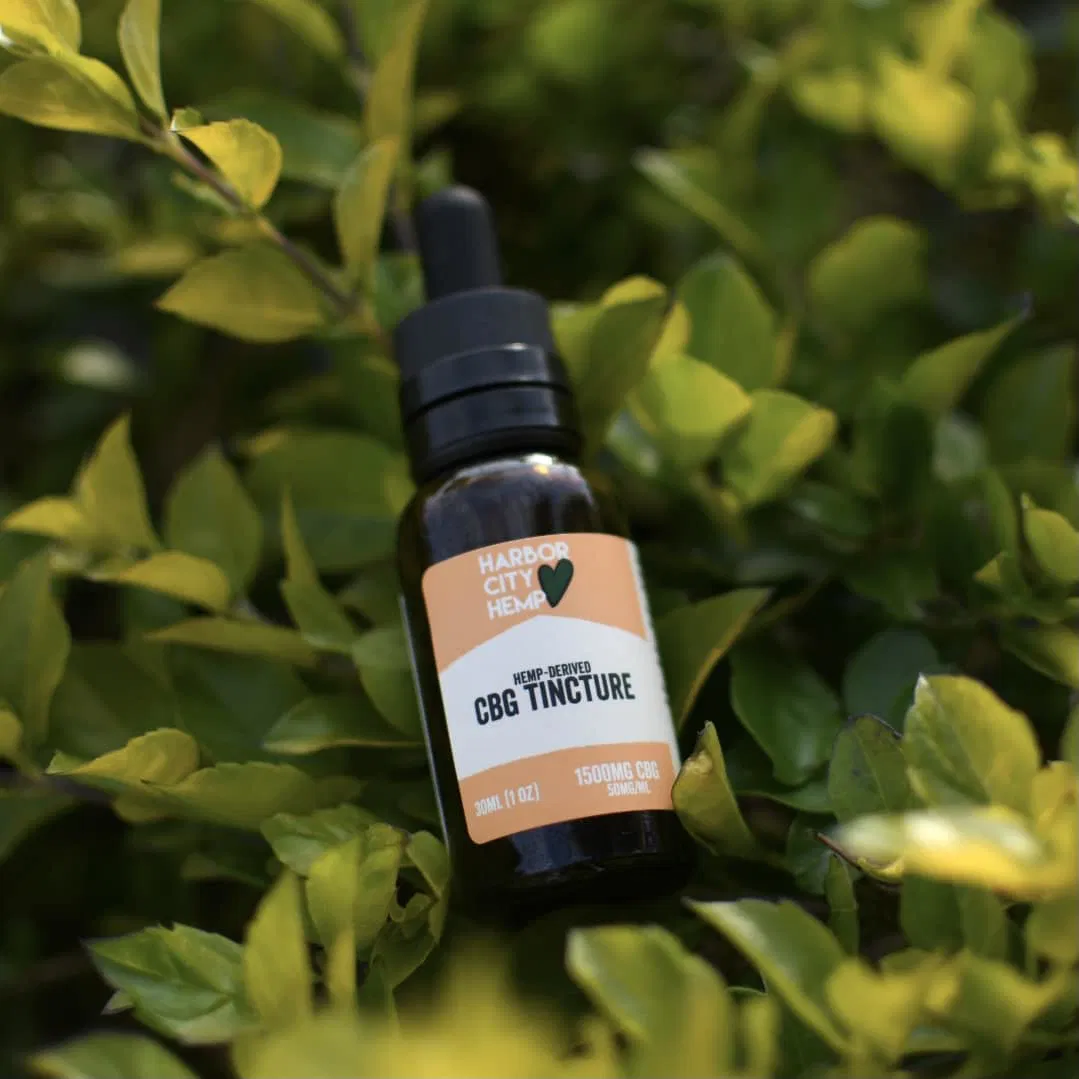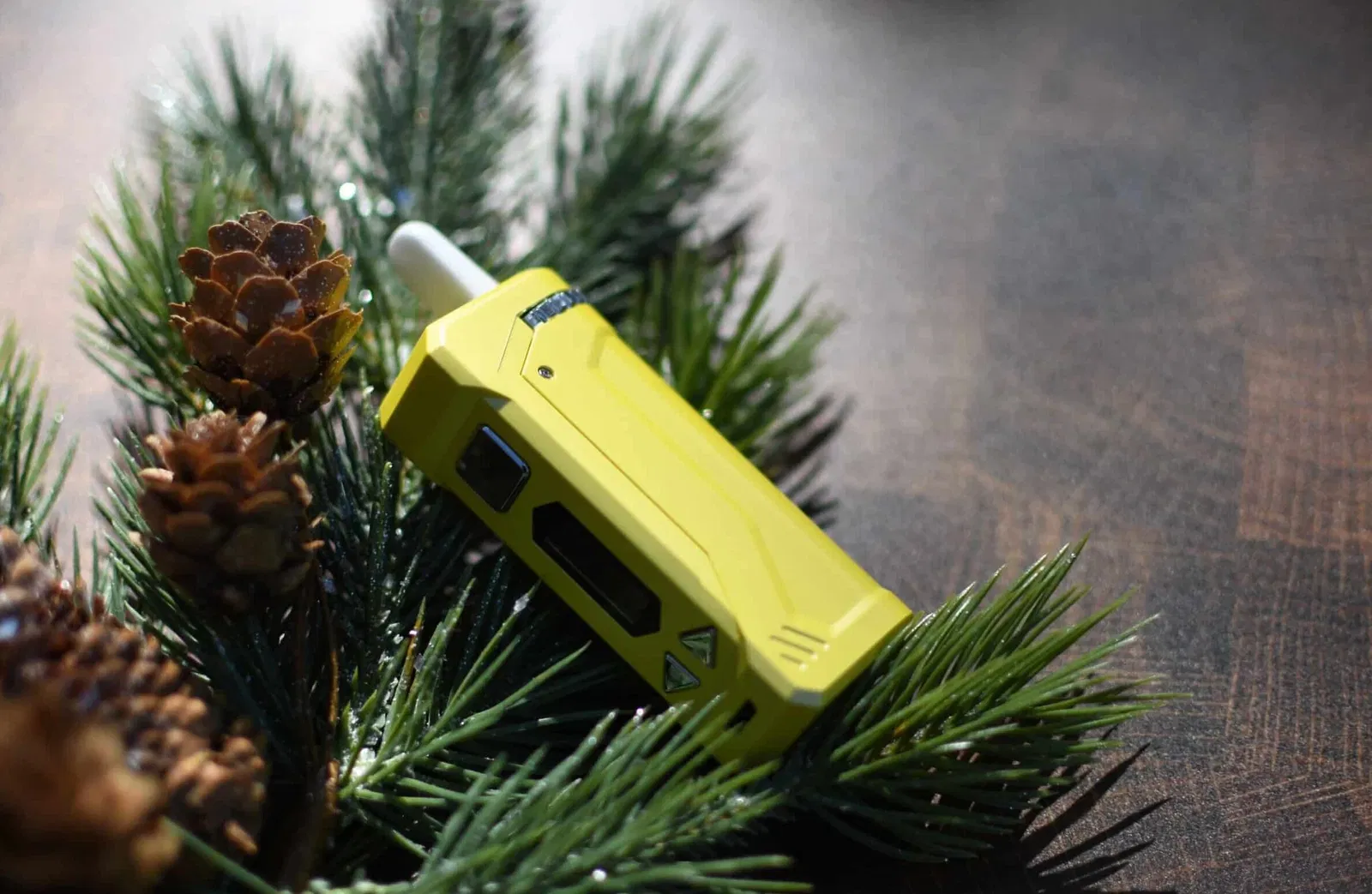CBG
What is CBG (Cannabigerol)?
Cannabigerol (CBG) is a minor cannabinoid that has been getting a lot of attention in the past few months due to its potential benefits. But does CBD help as much as everyone says it does? This blog will tell you everything you need to know about the so-called “cannabinoid stem cell.”
What is CBG?
The cannabis component CBG is called the “mother of all cannabinoids.” This is because other cannabinoids are made from cannabigerolic acid (CBGA), which is an acidic form of CBG.
Cannabidiol (CBD) and tetrahydrocannabinol (THC) are two other cannabinoids found in large amounts from cannabis plants. Most cannabis plants have between 20% and 25% CBD, while the amount of THC can be anywhere from 25 to 30%. On the other hand, CBG is found in lower amounts than other cannabinoids.
Since CBG is found in much lower amounts than other cannabinoids, CBG-based products are harder to find and often more expensive. Nevertheless, CBG products are getting more attention because they have many potential therapeutic effects.
Does CBG Get You High?
CBG produces no psychoactive effects on the human body. Some people might see this as a bad thing, but it does open the door for this minor cannabinoid to be used more often, especially in cannabis research, to test its medical efficacy. Moreover, since the substance does not make you feel high, you can use CBG during your regular work or school day to get the possible mental benefits without feeling fuzzy.
Is CBD a Natural Substance?
The way that CBG is taken out of cannabis plants often leads to misunderstandings about where this compound comes from in nature. To get enough CBG from cannabis and hemp plants, companies that make CBG use complicated extraction methods that usually involve using CO2 or ethanol. We’ll explain these processes in the next sections.
How Is CBG Made?
Younger cannabis plants are where CBG is extracted since they have a higher concentration of the compound. Fully grown plants have a lot of THC and CBD but not much CBG. This is because most of the CBG has been changed into CBD and THC before this point in the plant’s growth.
Cannabis growers have been researching genetic engineering and crossbreeding to increase the number of minor cannabinoids that cannabis plants make.
Basically, more biomass will be needed to make enough CBG for commercial manufacturing. At the moment, CBG concentrations in some types of hemp can be well over 90%. Some cannabis strains, like White CBG, Super Glue CBG, and Jack Frost CBG, have a higher CBG content than others. These strains are grown in the lab to produce more of the cannabinoid.
Growing Cannabis Plants And Getting Cannabinoids Out Of Them
With the Farm Bill of 2018, it is now legal to grow hemp and make CBG and other cannabinoid derivatives from it. But the amount of THC in any products made from it must be less than 0.3%.
CBG oil can be made by extracting it from the cannabis plant using hydrocarbons, ethanol, or carbon dioxide. Since CBGA is the first cannabinoid to form in young cannabis plants, growers need to harvest the plants as soon as possible. But this window of time is not very long. Growers should wait until the plant has been flowering for six of its eight-week cycle before picking the crop.
Even if you harvest your cannabis when the CBG level is at its highest, your CBGA levels will still be low. To make things even harder, when you harvest cannabis plants before they are fully grown, the overall weight of cannabinoids is lower than when you harvest them when they are fully grown.
CBG Vs. CBD: Similarities And Differences
CBG and CBD are the same in some ways. For instance, both cannabinoids affect the endocannabinoid system and are non-psychoactive. In terms of their effects, both CBD and CBG help slow down racing thoughts and calm nervous feelings.
From a chemical point of view, CBG and CBD look like they have a lot in common. Both substances are made up of only carbon, hydrogen, and oxygen. However, from a biological point of view, there are a number of important differences between the two.
One difference between the two cannabinoids that stands out is that most cannabis plants have less than 1% CBG, while some can have as much as 25% CBD. In addition, although both cannabinoids affect the endocannabinoid system, they bind to the CB1 and CB2 receptors differently.
Availability
It takes about 20 times as much plant matter to make CBG as it does CBD, making CBG more expensive. On the other hand, CBD is popular because it is easy to get and does not cost too much.
Manufacturing
It is much harder to make CBG products than it is to make other items in the cannabis industry. CBG and CBD are similar in a lot of ways, so most producers would rather make the former instead of the latter.
Legality
CBG is not illegal, but the way it is made is a bit complicated. The United Nations Convention on Psychotropic Substances from 1971 says that CBG is not a controlled substance. This means that there are no federal rules about it.
But as per the Controlled Substances Act, CBG that comes from marijuana is against the law. CBG that comes from hemp, on the other hand, is not. In the United States, it is mostly legal to grow hemp plants containing CBG.
How Does CBG Interact With The Body?
The body’s endocannabinoid system allows the cannabinoids to interact with the cannabinoid receptors found in the nervous and immune systems. This system makes sure that our bodies stay as healthy as possible no matter what.
There are two cannabinoid receptors in our bodies, CB1 and CB2. The former is found in the nervous system and the brain, while the latter is in the immune system and other body parts.
CBG works by binding to both receptors, where it is thought to boost the action of anandamide. Anandamide is a neurotransmitter that helps people feel more pleasure and motivation, control their appetite and sleep, and feel less pain.
CBG’s Potential Benefits
CBG, like CBD products, is often used to relieve chronic pain. However, consuming CBG does not make you feel high, unlike other cannabinoids like THC. Early research on this cannabinoid has shown a lot of promise, but there is still an urgent need for more peer-reviewed human trials.
Several promising animal studies suggest that CBD has the therapeutic potential to help alleviate the symptoms of a wide range of health problems. Check out some of the therapeutic benefits of CBD below:
Inflammatory Bowel Disease
Inflammatory bowel disease (IBD) can cause the intestine to be inflamed for a long time. It is a common disease that affects millions of people all over the world. Conditions like Crohn’s disease and ulcerative colitis also fall into this group.
A 2013 experiment with animals showed that CBG could help people with inflammatory bowel disease. First, the researchers caused chronic inflammation in the mice’s colons, similar to what IBD does, and then they gave the mice CBG.
It was found that CBG could reduce inflammation and the amount of nitric oxide the body makes. It also caused the production of reactive oxygen species (ROS) in the digestive tract to go down. The researchers decided that CBG should be looked into more so it could be used in clinical trials with people with IBD.
Glaucoma
In an animal experiment, researchers found that CBG could be used to treat glaucoma. After giving CBG to cats with glaucoma, researchers saw a drop in eye pressure and an increase in the flow of aqueous humor. Aqueous humor helps keep the pressure in the eye in check.
Bladder Dysfunction
In a study that came out in 2015, researchers looked at the effects of different cannabinoids on bladder contractions. Based on the data, CBG was the best at managing symptoms of bladder problems, followed by THCV, CBD, and CBDV in that order.
Huntington’s Disease
One of the signs of Huntington’s disease is the death of nerve cells in the brain. In a 2015 study, CBG and other cannabinoids were given to mice genetically modified to have an experimental form of Huntington’s disease. The researchers did this to see if they could protect the nerve cells.
They found that CBG could work as a neuroprotectant and keep the nerve cells in the brain from being damaged. In addition, it helped fix motor problems and stopped 3-nitropropionic acid from damaging striatal neurons.
Appetite Stimulant
In 2016, researchers looked at how CBG affected rats and found that it made the animals more hungry. Compared to the rats in the control group, those that had been given CBG could eat about twice as much food. Stimulating a person’s appetite may be helpful for people who lose their appetite because of chemotherapy or who have trouble eating because of other medical conditions.
Antibacterial Properties
A study done in 2020 on the antibiotic potential of cannabis found that CBG has antibacterial properties, especially against methicillin-resistant strains of Staphylococcus aureus (MRSA), which causes staph infections. MRSA is known for causing infections that are hard to treat because they are resistant to multiple drugs.
Cancer Cell Growth
In a study done in 2014 on rats with colon cancer, CBG blocked the receptors that help cancer cells grow and spread. The substance also slowed the growth of colorectal cancer cells. CBG stops the growth of tumors in mouse models from happening by blocking TRPM8 channels, which are what cause cancer cells to multiply.
How To Use CBG
CBG oil is the most common form of CBG product that you can buy in stores. However, it is pretty rare and expensive. CBG can also be found in the following forms:
- CBG flower
- CBG gummy
- CBG isolate
- CBG tincture
- CBG tablet
- CBG cream
If you want to get the benefits of all of the cannabinoids and terpenes found in cannabis plants, choose products with a full or broad spectrum of cannabinoids and terpenes. For instance, CBD oil can also consist of other cannabinoids like CBG, depending on the brand and manufacturer.
Check out this full-spectrum CBG oil!
Full-spectrum and broad-spectrum oils are made to get the entourage effect, which happens when all cannabinoids work better when taken together. Broad-spectrum CBD products have cannabinoids from the whole cannabis plant but don’t have THC. On the other hand, full-spectrum cannabis products have THC.
How to Boost The Potential Benefits Of CBG
In addition to taking CBG, you can do a few things to make it work even better to boost your productivity and improve your brain function. Some of them are as follows:
Only Use CBG When Necessary
It would be best if you only used CBG when you really need more mental energy. Since CBG binds to CB1 receptors, long-term use can make your body less sensitive to CBG, which makes the cannabinoid less effective over time. You should save CBG for times when you have a big test or are about to go through a busy time at work.
Build Good Habits
Besides adding CBG to your routine, you can improve your ability to think clearly and pay attention if you get enough sleep, eat well, and do regular physical activities. If you want to be as productive as possible, put yourself in the best position to do so. This way, you don’t have to rely on taking CBG. Only use CBG when you need an extra push to get into the zone.
Lower Your Stress Levels
Lastly, try to lower your stress levels by doing activities that are good for your mental health. Meditation that is done every day is a great way to reduce stress, and studies have shown that less stress is linked to better cognitive performance.
Potential Adverse Effects Of CBG
People think that CBG works better than traditional drugs, some of which can cause serious side effects and addiction. However, several people who used CBG to help manage insomnia, chronic pain, depression, and anxiety reported some side effects. These effects include dry mouth, tiredness, hunger, and dry eyes.
More research is being done on the possible negative effects of CBG and the risks involved when CBG and other cannabinoids interact with other drugs. However, not enough research has been done to make a reliable assessment.
Frequently Asked Questions
What is cannabigerol used for?
Cannabigerol, or CBG, is getting a lot of attention due to its potential to help manage a number of conditions, such as Huntington’s disease and IBD. It may lower cholesterol levels as well as protect the brain and nerves. Due to its well-known anti-inflammatory and pain-relieving effects, CBG is used to help alleviate symptoms of arthritis and chronic pain. It has also been shown to help reduce inflammation in the stomach, which can help people with diseases like Crohn’s disease and ulcerative colitis.
What are the health benefits of CBG oil?
As mentioned above, there are several health benefits to using CBG oil and other CBG products. CBG is not psychoactive. Thus it does not make you feel high. However, CBG has different effects depending on the person who takes it. How long CBG stays in your body is also affected by your body mass index (BMI) and metabolism. CBG is known for giving people more energy, which some people compare to the rush they get from drinking coffee.
What does CBG do to the brain?
CBG works by binding to both CB1 and CB2 receptors, where it is thought to boost the action of anandamide. Anandamide is a neurotransmitter that helps people feel more pleasure and motivation, control their appetite and sleep, and feel less pain. Unlike THC, CBG doesn’t have any psychoactive effects. If you put CBG oil under your tongue, the effects will start within 15 minutes, but they will only last for two to three hours. CBG gummies, on the other hand, will take 45 minutes to start working, but the effects will last for a much longer time or up to 7 hours.
Why do people use CBG?
CBG, like CBD, will not make you feel high like THC does. This is why many people are interested in trying the cannabinoid to prevent experiencing adverse effects from using substances like THC. People use CBG because it gives them more energy, helps them focus, and makes them more creative.
Conclusion
CBG is a cannabinoid found in very small amounts in cannabis plants. It has some of the same benefits as CBD, helping people think, focus, and get things done. Since it is harder to get CBG out of medical marijuana, products with this compound are much harder to find and cost more than those with CBD. Making small amounts of CBG is complicated and expensive because mature cannabis plants have about 20 times less CBG than CBD or THC.
In the past few years, there have been promising ways to increase the amount of CBG extracted, but much work is still needed to produce more CBG. It is also likely that the price will go down as more companies start making it and it becomes more popular.
CBG is completely natural and is produced while the cannabis plants are still young and growing. Several studies have shown that CBG could be used as a plant medicine. However, more CBG research and clinical trials are needed to scientifically confirm its potential as a promising medical cannabis option.
Check Out the CBG Products at Harbor City Hemp
Take your pick from the best CBG products here at Harbor City Hemp! Get quality and affordable hemp products with up to a 30% discount through the Harbor City Hemp Discount Program.




